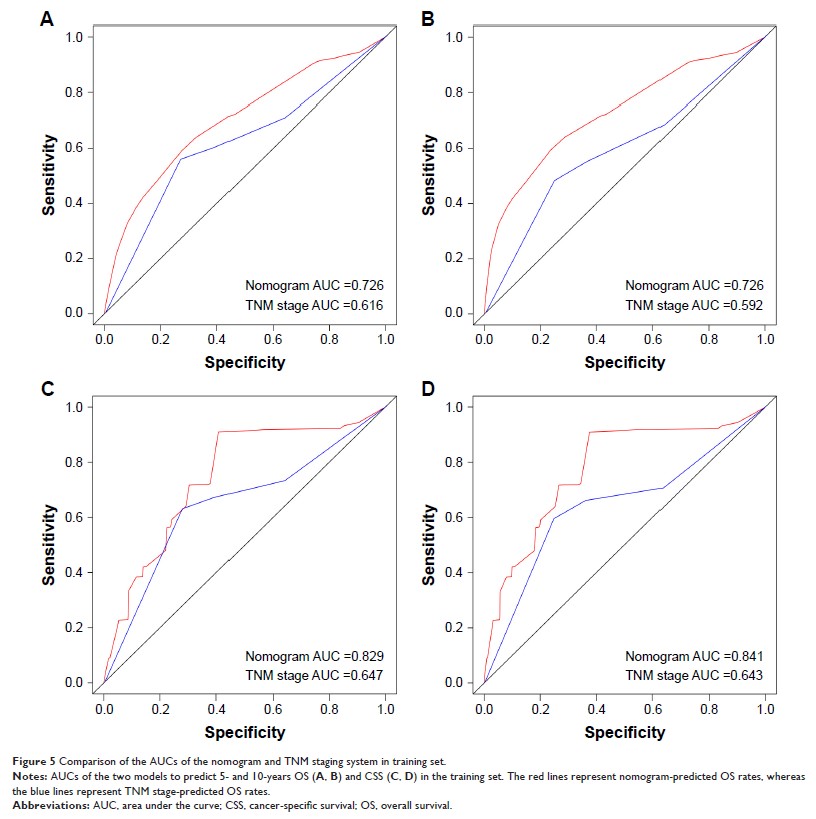108384
论文已发表
注册即可获取德孚的最新动态
IF 收录期刊
- 3.4 Breast Cancer (Dove Med Press)
- 3.2 Clin Epidemiol
- 2.6 Cancer Manag Res
- 2.9 Infect Drug Resist
- 3.7 Clin Interv Aging
- 5.1 Drug Des Dev Ther
- 3.1 Int J Chronic Obstr
- 6.6 Int J Nanomed
- 2.6 Int J Women's Health
- 2.9 Neuropsych Dis Treat
- 2.8 OncoTargets Ther
- 2.0 Patient Prefer Adher
- 2.2 Ther Clin Risk Manag
- 2.5 J Pain Res
- 3.0 Diabet Metab Synd Ob
- 3.2 Psychol Res Behav Ma
- 3.4 Nat Sci Sleep
- 1.8 Pharmgenomics Pers Med
- 2.0 Risk Manag Healthc Policy
- 4.1 J Inflamm Res
- 2.0 Int J Gen Med
- 3.4 J Hepatocell Carcinoma
- 3.0 J Asthma Allergy
- 2.2 Clin Cosmet Investig Dermatol
- 2.4 J Multidiscip Healthc

甲状腺髓样癌预后列线图的开发和验证
Authors Guan Y, Fang S, Chen L, Li Z
Received 27 November 2018
Accepted for publication 31 January 2019
Published 27 March 2019 Volume 2019:12 Pages 2299—2309
DOI https://doi.org/10.2147/OTT.S196205
Checked for plagiarism Yes
Review by Single-blind
Peer reviewers approved by Dr Colin Mak
Peer reviewer comments 2
Editor who approved publication: Dr Gaetano Romano
Background: This aim
of study was to develop and validate clinical nomograms to predict the survival
of patients with medullary thyroid cancer.
Patients and methods: Patient
data were collected from the Surveillance, Epidemiology, and End Results
database between 2004 and 2013. All included patients were randomly assigned
into the training and validation sets. Multivariate analysis using Cox
proportional hazards regression was performed, and nomograms were constructed.
Model performance was evaluated by discrimination and calibration plots.
Results: A total
of 1,657 patients were retrospectively analyzed. The multivariate Cox model
identified age, tumor size, extrathyroidal extension, N stage, and M stage as
independent covariates associated with overall survival (OS) and
cancer-specific survival (CSS). Nomograms predicting OS and CSS were
constructed based on these covariates. The nomograms predicting both OS and CSS
exhibited superior discrimination power to that of TNM staging system in the training
and validation sets. Calibration plots indicated that both the nomograms in OS
and CSS exhibited high correlation to actual observed results.
Conclusion: The
nomograms established in this study provided an alternative tool for prognostic
prediction, which may thereby improve individualized assessment of survival
risks and lead to the creation of additional clinical therapies.
Keywords: medullary
thyroid cancer, nomogram, overall survival, cancer-specific survival
